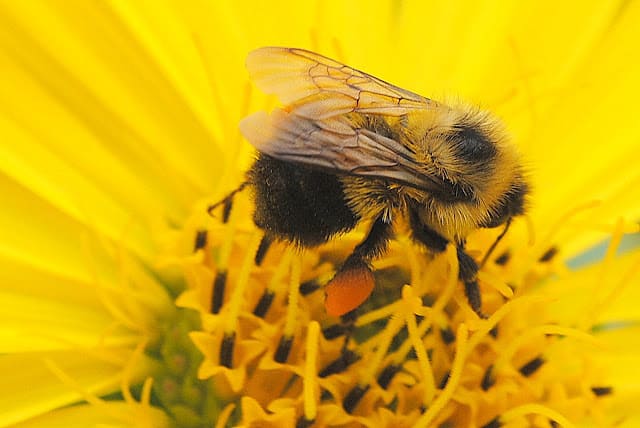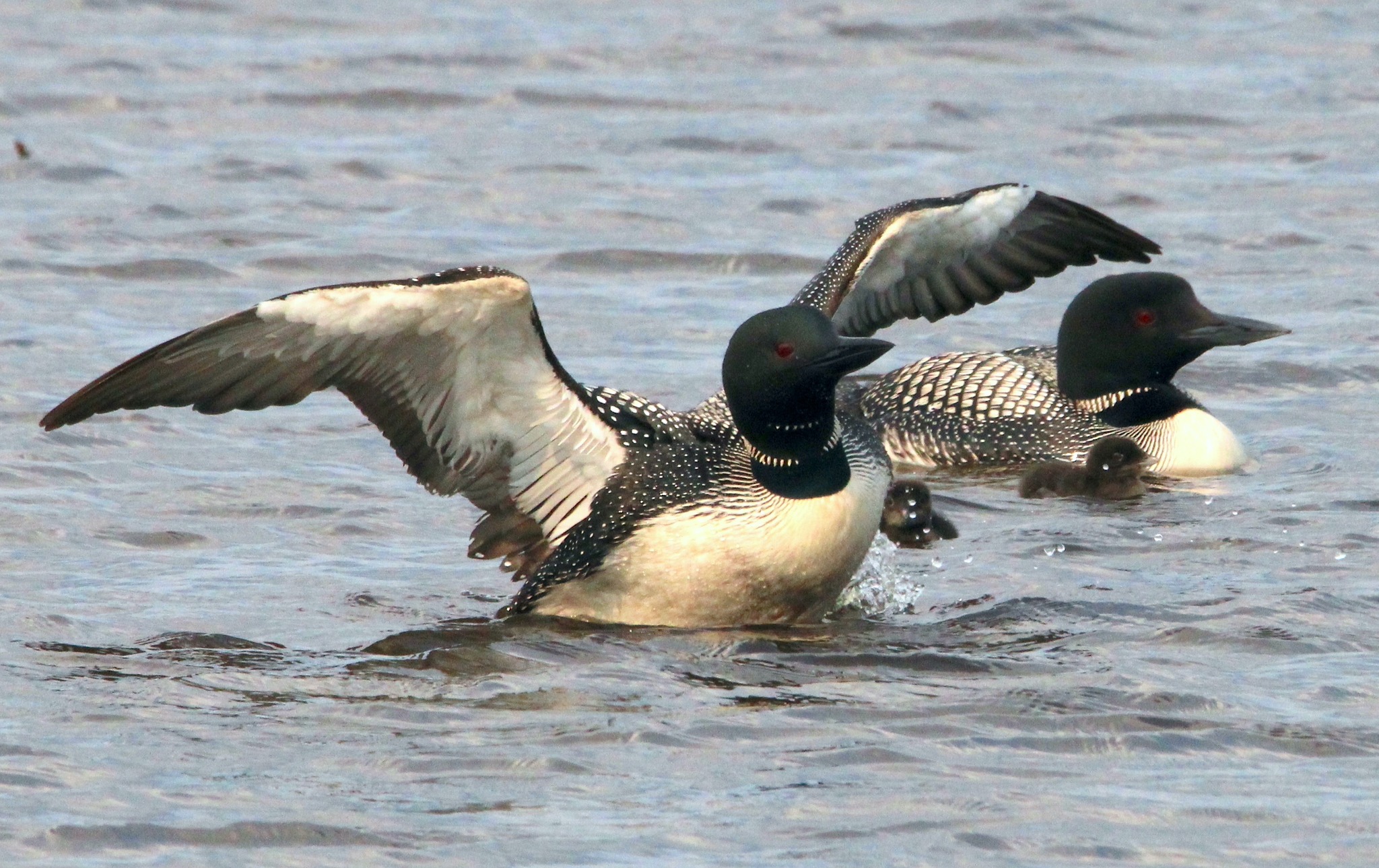“There are two groups of social bees in North America: the bumblebees and the honeybees. A colony of bumblebees (Bombus), except in a few tropical species, does not live through the winter; only the young queens remain alive, hibernating underground and emerging in the spring to seach for a new nesting site.
This may be a dry tussock or the burrow of some other animal. Hollowing out a small cavity she makes a honey pot that she has elaborated within her body from flower nectar. At the same time she makes a waxen cell in which she lays her first eggs; on this she sits like s brooding hen.
When the eggs hatch she may have to make occasional forays to gather more pollen and nectar to feed her offspring, opening the common larval cell to inject the yellowish regurgitated liquid. The larvae develop into soft-winged, matted young workers, called callows, who take over the chores of the ever-increasing household while the queen resumes her egg laying.
Nests are occasionally invaded by other queens, who must be expelled, or by the queens of Psithyrus, bumblebees who have lost their worker caste, as well as their pollen baskets, and must live in a Bombus nest. A colony may attain a population of one to two thousand, but usually consists of not many more than 100 individuals.
Bumblebees collect pollen and nectar at the same time: for this reason they are very good polinators, especially of red clover.” from “Insects of North America” by Alexander and Elsie Klots. Doubleday & Company, New York
Steven Scott
Steven Scott is a photonaturalist blogger based in Florida and Maine. He has surveyed butterflies with Earthwatch Institute in the mountains of Vietnam, tagged juvenile snook with Mote Marine Laboratory in the mangroves of Florida and filmed a BioBlitz insect survey in Acadia National Park. A registered nurse and retired Army officer, Steven believes man is an integral part of nature and travels annually to Vietnam with humanitarian medical teams from Vets With a Mission.





Leave a Reply